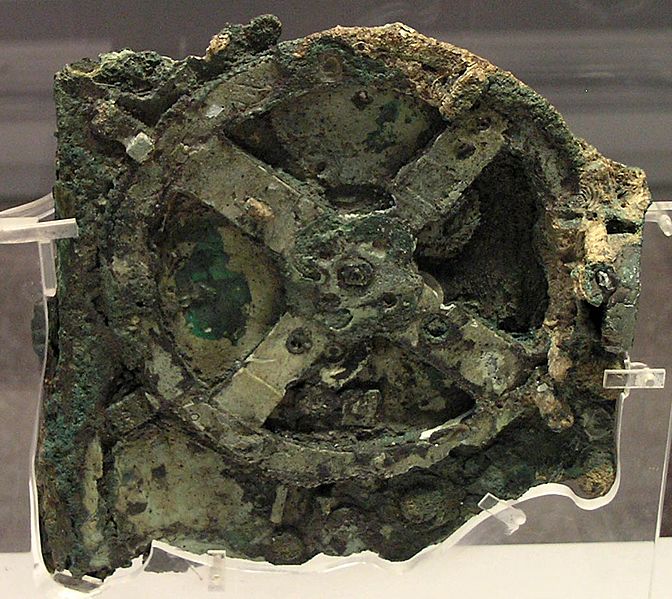Image: NAMA Machine d'Anticythère 1

Description: Main w:en:Antikythera mechanism fragment (fragment A). The mechanism consists of a complex system of 30 wheels and plates with inscriptions relating to signs of the zodiac, months, eclipses and pan-Hellenic games. The study of the fragments suggests that this was a kind of astrolabe. The interpretation now generally accepted dates back to studies by Professor w:en:Derek de Solla Price, who was the first to suggest that the mechanism is a machine to calculate the solar and lunar calendar, that is to say, an ingenious machine to determine the time based on the movements of the sun and moon, their relationship (eclipses) and the movements of other stars and planets known at that time. Later research by the Antikythera Mechanism Research Project and scholar Michael Wright has added to and improved upon Price's work. The mechanism was probably built by a mechanical engineer of the school of Posidonius in Rhodes. Cicero, who visited the island in 79/78 B.C. reported that such devices were indeed designed by the Stoic philosopher Posidonius of Apamea. The design of the Antikythera mechanism appears to follow the tradition of Archimedes' planetarium, and may be related to sundials. His modus operandi is based on the use of gears. The machine is dated around 89 B.C. and comes from the wreck found off the island of Antikythera. National Archaeological Museum, Athens, No. 15987.
Title: NAMA Machine d'Anticythère 1
Credit: No machine-readable source provided. Own work assumed (based on copyright claims).
Author: No machine-readable author provided. Marsyas assumed (based on copyright claims).
Usage Terms: Creative Commons Attribution 2.5
License: CC BY 2.5
License Link: http://creativecommons.org/licenses/by/2.5
Attribution Required?: Yes
Image usage
The following 7 pages link to this image:

